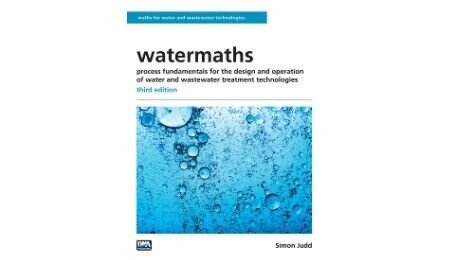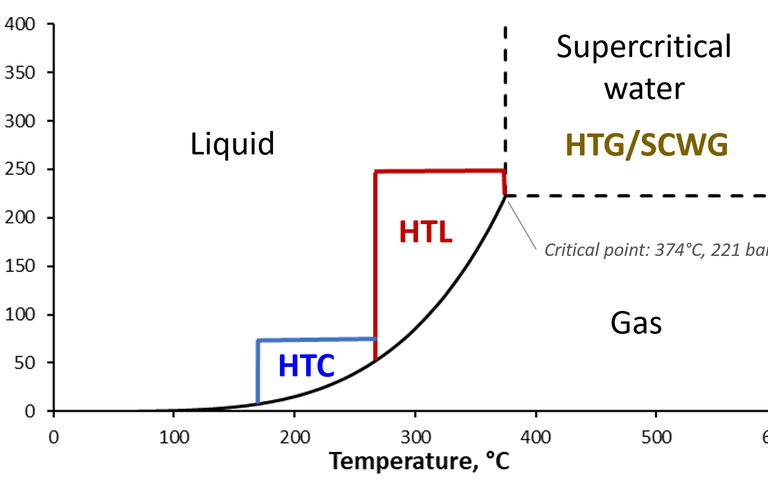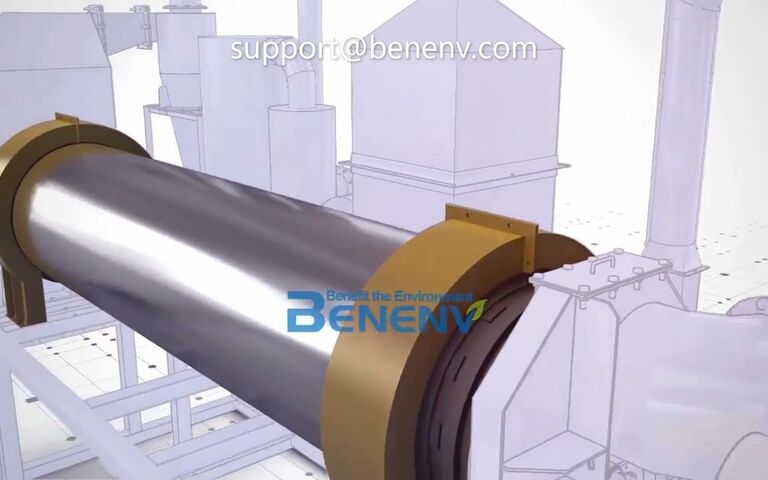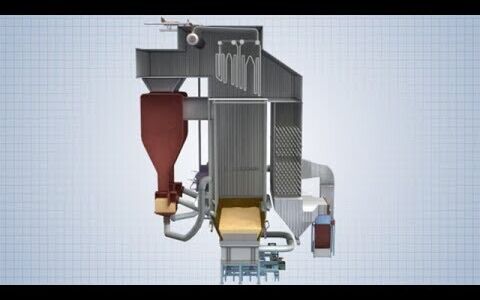Incineration − ten research papers

Incineration − ten research papers on torching sludge
Our list is presented in reverse chronological order without preference. It was compiled by Simon Judd in February 2022 and may be updated in future as new papers are published.
The implementation of sludge incineration represents a classic example of technology transfer. The original sewage sludge incinerator was installed for full-scale use in Dearborn, Michigan in 1935. It was based on the Nichols-Herreshoff multiple hearth furnace (MHF) configuration, already established for key industrial applications such as mineral ore roasting in the mining industry. From 1962 onwards, the MHF design was gradually displaced by the fluidised bed incinerator (FBI), a technology also transferred from the mining industry, which provides a higher afterburner temperature and greater combustion efficiency than the MHF. This is important for ensuring complete thermochemical oxidation of organic matter prior to discharge.
So, as with centrifugation, incineration is a mature technology with nonetheless many different facets offering correspondingly broad and diverse areas of research interest. Some of these are demonstrated in the selection below of recent research publications, all taken from the past two years:
- pollutant or constituent fate and impact, including:
- phosphorus recovery and reuse (a fairly well explored topic according to the research literature)
- leaching of metals and other toxic minerals from the ash product, and the subsequent impact on ash reuse − including a study comparing the leachability of the feed (post-precipitated sewage sludge) and ashed streams
- titanium dioxide, and
- gaseous emissions, as pertaining to the (co-)combustion method.
- recovery and reuse for specific applications, such as for a building material
- a cost and energy comparison with anaerobic digestion
- a comparative life cycle analysis (LCA) of the different sludge disposal options, and
- a review of the state of implementation of sewage sludge incineration in China.
Enjoy.
Abstract
This study focused on the resource recovery of sludge treatment by quantifying the environmental contributions, identifying the influential factors, and comparing different scenarios. Life cycle assessment (LCA) of sewage sludge treatment was carried out to estimate the environmental impacts of six scenarios: (1) co-digestion of sludge and food waste; (2) co-gasification of sludge and woody waste; (3) co-incineration of sludge and used oil; (4) landfilling; (5) incineration; and (6) anaerobic digestion combined with incineration. Results demonstrate that the resource recovery had a substantial contribution to the environmental performance of the sludge treatment, while the degree of contribution was largely affected by various treatment scenarios and diverse impact categories. To gain deep insight into the parameters related to resource recovery, sensitivity analysis was performed to investigate the influence of the parameters on the LCA results, including the organic content, conversion efficiency of organic matter to methane, and other energy conversion efficiencies. After integrating the inventory variation of those parameters into the decision process via the Monte Carlo simulation, results indicate that no obviously superior scenario could be identified. Conversely, when parameter uncertainty was not considered, co-gasification of sludge and woody waste exhibited the most preferable environmental performance. Overall, this study demonstrates that considering the parameter uncertainty of resource recovery will contribute to a more transparent evaluation process, but will inevitably increase the complexity of the decision-making process based on LCA results because it is difficult to determine a sludge treatment scenario that decisively outperforms the others.
© 2022 Elsevier LtdFull Reference
Zhou, X., Li, J., Zhao, X., Yang, J., Sun, H., Yang, S., & Bai, S. (2022). Resource recovery in life cycle assessment of sludge treatment: Contribution, sensitivity, and uncertainty. Science of the Total Environment, 806(3), 150409
Abstract
Incineration of municipal sludge and agri-food by-products generates large quantities of ash that can be used in agriculture as phosphorus fertilizer. The fertilizing potential of sludge incineration ash (SIA) from 12 cities in Canada and the United States was tested in a greenhouse experiment against a synthetic fertilizer (TSP: triple superphosphate), a natural fertilizer (RP: rock phosphate), and a control without any P fertilizer. Two soil types were used: clay and sandy loam. A reliable a priori indicator of SIA P bioavailability was determined using the random forest method. SIA application increased ryegrass P uptake. The SIA relative P effectiveness (RPE), compared to the TSP, varied from 5.1% to 46.2% depending on the sludge origin and P solubility. SIA RPE was greater than RP for the clay soil but similar for the sandy loam soil. The neutral ammonium citrate (NAC) extraction, sometimes inappropriately used to characterize P availability of sludge and by-products, explained only 53% of the RPE variation. The random forest analysis showed that the oxalate extraction (Al, P, and Fe) is a better indicator (R2 = 0.94) of relative availability of SIA than the NAC P solubility (R2 = 0.86), and that Al content is the factor that influences most SIA P solubility. Based on our findings, we recommend the use of the Al, Fe, and P oxalate extraction to predict the SIA P availability, instead of the widely used NAC method which extracts only P. Abbreviations APR, Apparent phosphorus recovery; RPE, Relative phosphorus effectiveness; SIA, Sludge incineration ash; RP, Rock phosphate; C-AAS, Colorimetry for P and atomic absorption spectrophotometry for Fe and Al; M3, Mehlich3 method; NAC, Neutral ammonium citrate extraction; EDTA, ethylene diamine tetra-acetic acid; RSE, Residual standard error.
© 2022 Elsevier LtdFull Reference
Joseph, C.A., Khiari, L, Gallichand, J., and Beecher, N. (2022). Assessing and predicting phosphorus phytoavailability from sludge incineration ashes. Chemosphere, 288(2), 132498
Abstract
Incinerations residues from different types of materials (sewage sludge incineration ash and municipal waste incineration ashes) can either be by-products used in industry, or can pose a serious environmental problem related to their composition and the presence of potentially hazardous elements. State regulations and standards indicate whether material is inert, non-hazardous or hazardous. These standards, however, do not provide a complete overview on the leaching behavior of potentially hazardous elements in the environment. This study presents the result of batch experiment performed in accordance with the PN-EN 12457-2 (2006) and PN-EN 12457-4 (2006) standards. The results indicated that the leachability of elements is strongly dependent on the mineral composition of the waste product (the concentration and composition of soluble phase), the chemical composition (the mobility of hazardous elements and their affinity to soluble minerals), and the pH. To ensure environmental safety a thorough characterization of the waste is required followed by qualitative assignment to a particular waste type based on available guidance. Furthermore, to avoid leaching of potentially harmful elements into soils or surface water, it is also paramount to perform environmental impact assessment of wastes used as by-product in industry e.g., as building or road construction materials (aggregate) and fertilizers.
© 2021 Elsevier LtdFull Reference
Kasina, M., Kajdas, B., and Michalik, M. (2021). The leaching potential of sewage sludge and municipal waste incineration ashes in terms of landfill safety and potential reuse. Science of the Total Environment, 791, 148313
Abstract
Titanium dioxide (TiO2) (nano)particles are produced in large quantities and their potential impacts on ecosystems warrants investigations into their fate after disposal. TiO2 particles released into wastewater are retained by wastewater treatment plants and accumulate in digested sludge, which is increasingly incinerated in industrialized countries. Therefore, we investigated the changes of the Ti-speciation during incineration of as-received sludge and of sludge spiked with anatase (d=20-50 nm) or rutile (d=200-400 nm) using X-ray absorption spectroscopy (XAS) and transmission electron microscopy (TEM). In the as-received sludge, rutile and anatase were the dominant Ti bearing minerals and both remained unaffected by the anaerobic treatment. During incineration, Ti reacts with hematite to members of the hematite-ilmenite solid solution series (Hem-Ilm). Up to 80% of the Ti spiked as anatase transformed into Hem-Ilm, a distorted 6-fold coordinated Ti (Ti(IV)sulfate) and rutile during incineration. Up to 30% and 60% of rutile transformed into Hem-Ilm and Ti(IV)sulfate represented phases in fly and bottom ash, respectively. Fe and Ti were spatially correlated in ash derived from as-received and anatase spiked sludge, whereas only a thin layer of the spiked rutile reacted with Fe, in line with XAS data. This study highlights the transient nature of nano-Ti species during sewage sludge incineration.
© 2021 Elsevier LtdFull Reference
Wielinski, J., Voegelin, A., Grobéty, Bernard B., Müller, C.R., Morgenroth, E., and Kaegi, R. (2021). Transformation of TiO2 (nano)particles during sewage sludge incineration. Journal of Hazardous Materials, 411, 124932
Abstract
Municipal sewage sludge is a significant by-product in the conventional treatment of municipal wastewater. Its output has greatly increased with the progress of urbanization and industrialization. The harmless disposal and resource utilization of municipal sewage sludge has become an urgent problem to be solved in the environment field. Incineration is a relatively mature technology for harmless disposal of municipal sewage sludge but faces pollutant emission and high cost problems. In this work, the latest research progress on municipal sewage sludge incineration and its pollutant control is summarized and analyzed systematically. Sludge co-combustion in municipal solid waste incinerators, coal-fired power plants and cement kilns does not require new sludge incineration equipments and flue gas treatment equipments. At the same time, co-combustion is also more environmentally friendly under certain circumstances. Staged air combustion, low oxygen dilution combustion and other methods can optimize combustion and effectively control nitrogen oxide emission during sludge combustion. Ca-based additives have significant effect on sulfur removal. Cl-containing compounds affect the volatilization of heavy metals and the formation of polychlorinated dibenzo-p-dioxins and polychlorinated dibenzofurans.
© 2021 Elsevier LtdFull Reference
Liang, Y., Xu, D., Feng, P., Hao, B. Guo, Y., Wang, S. (2021). Municipal sewage sludge incineration and its air pollution control, Journal of Cleaner Production, 295, 126456
Abstract
Circular economy principles were adopted by European Commission, to support a sustainable growth. They contain general rules that should be considered in all situations. At present, during pandemic, some waste disposal practices are under evaluation to guarantee safety conditions. For example, in view of the recent results reporting the presence of SARS-CoV-2 virus in sewage sludge, the possibility that it diffuses in the environment is alarming. The situation may result critical in densely populated cities, which are the largest sources of sewage sludge. In this frame the diffused practice of reuse of this waste in agriculture is under revision. In this context, incineration may represent a valuable alternative strategy to manage sewage sludge during pandemic. Indeed, due to thermal treatment, the destruction of organic micropollutants and pathogens, eventually present in the waste, is guarantee. Moreover, it is fundamental to highlight that also if the management of sewage sludge changes, the ash resulting from its combustion may have suitable reuse opportunities, and their landfilling should be avoided. This work presents the available possibilities of sewage sludge ash recovery in building applications and shows the results obtained by the analysis of their sustainability. The approach is based on the use of embodied energy and carbon footprint values, to make a simple and fast new method able to be a suitable tool to support and promote sustainability also in critical situations (such as pandemic) and when all the information about a technology are not available, making not possible to perform a full-LCA approach. This work aims to be not only a reference paper for promotion of strategies able to increase waste management safety, but also an example showing that circular economy principles should be pursued also if boundary conditions can change.
© 2021 Elsevier LtdFull Reference
Ducoli, S., Zacco, A., and Bontempi, E. (2021). Incineration of sewage sludge and recovery of residue ash as building material: A valuable option as a consequence of the COVID-19 pandemic. Journal of Environmental Management, 282, 111966
Abstract
The major element and heavy metal concentrations of post-precipitated sewage sludge (PPS) and its ash residue (PPA) were determined using microwave digestion followed by inductively coupled plasma optical emission spectrometry (ICP-OES) and mass spectrometry (ICP-MS). To the best of our knowledge, this has not been previously done. In both PPS and PPA the heavy metal concentrations were clearly below the average concentrations than those encountered in sewage sludge in Europe. The leaching efficiency of the metal (Al/ Fe) used as a precipitation agent from post-precipitated sludge and its ash residue with phosphoric acid was also investigated with previously optimized leaching conditions. Tests resulted in leaching efficiencies for Al of 85 ± 1% and 99.5 ± 0.7% for PPS and PPA, respectively which were produced with aluminium as precipitation agent for phosphorus. Sludge, which was produced using iron as a precipitation agent, had a leaching efficiency of Fe 36.6 ± 0.9% and 68.0 ± 1.1%, for PPS and PPA, respectively. The leaching efficiency for P was 94 ± 3% and 96 ± 5% for Al-PPA and Fe-PPA, respectively.
© 2020 Elsevier LtdFull Reference
Reuna, S., and Väisänen, A. (2020). To incinerate or not? - Effects of incineration on the concentrations of heavy metals and leaching efficiency of post-precipitated sewage sludge (RAVITA™). Waste management 118, 241-246
Abstract
The major element and heavy metal concentrations of post-precipitated sewage sludge (PPS) and its ash residue (PPA) were determined using microwave digestion followed by inductively coupled plasma optical emission spectrometry (ICP-OES) and mass spectrometry (ICP-MS). To the best of our knowledge, this has not been previously done. In both PPS and PPA the heavy metal concentrations were clearly below the average concentrations than those encountered in sewage sludge in Europe. The leaching efficiency of the metal (Al/ Fe) used as a precipitation agent from post-precipitated sludge and its ash residue with phosphoric acid was also investigated with previously optimized leaching conditions. Tests resulted in leaching efficiencies for Al of 85 ± 1% and 99.5 ± 0.7% for PPS and PPA, respectively which were produced with aluminum as precipitation agent for phosphorus. Sludge, which was produced using iron as a precipitation agent, had a leaching efficiency of Fe 36.6 ± 0.9% and 68.0 ± 1.1%, for PPS and PPA, respectively. The leaching efficiency for P was 94 ± 3% and 96 ± 5% for Al-PPA and Fe-PPA, respectively.
© 2020 Elsevier LtdFull Reference
Žnidarčič, A., Seljak, T., and Katrašnik, T. (2020). Surrogate model for improved simulations of small-scale sludge incineration plants. Fuel, 280, 118422
Abstract
Handling excess sludge produced by wastewater treatment is a common problem worldwide. Due to limited space available in landfills, as well as difficulties involved in using excess sludge in agriculture, there is a need for alternative disposal methods. Although anaerobic digestion (AD) is widely used in processing sludge, only partial energy recovery from methane and sludge volume reduction can be achieved, resulting in a substantial amount of sludge remaining, which needs to be disposed of. Direct incineration after sludge drying is one possible option, a practice that is already in place in some cities in China. A comparison between direct incineration and conventional AD (with or without pretreatment by thermal hydrolysis) has to be made with respect to the energy balance and investment & operational (I & O) costs. This comparison reveals direct incineration to have the lowest energy deficit and I & O costs. Therefore, it is expected that direct incineration without AD will become the preferred sustainable approach to handling sludge.
© 2020 Elsevier LtdFull Reference
Hao, X., Chen, Q., van Loosdrecht, M.C.M., Li, J., and Jiang, H. (2020). Sustainable disposal of excess sludge: Incineration without anaerobic digestion. Water Research, 170, 115298
Abstract
Sewage sludge disposal and utilization have become an ever-increasing challenge due to the rapid development of urbanization and strict environmental protection requirements in China. Incineration is becoming one of the most important strategies for sludge disposal due to the large volume reduction rate, destruction of contaminations, and energy recovery. A general introduction to sludge disposal status in China will be summarized, including sludge production, characteristics of sludge, and existing disposal methods. Second, current research and developments regarding the whole process of sludge incineration will be introduced, which consist of the pretreatment of sewage sludge (e.g., thickening, conditioning, dewatering, and drying), incineration (e.g., co-combustion and mono-combustion), and pollutant control (e.g., gaseous pollutant, heavy metals, and fly ash). Different kinds of incinerators performing sludge mono- or co-combustion are thoroughly introduced and analyzed. Finally, several typical commercial applications of sludge incineration, including the key operation parameters, will be discussed in detail to illustrate the development of the sludge incineration technique in China.
© 2020 Springer Nature B.V.Full Reference
Zhang, S., Wang, F., Mei, Z., Lv, L., Chi, Y. (2020). Status and development of sludge incineration in China. Waste and Biomass Valorization, 12(7), 3541-3574

Professor Simon Judd has over 30 years’ post-doctorate experience in all aspects of water and wastewater treatment technology, both in academic and industrial R&D. He has (co-)authored six book titles and over 200 peer-reviewed publications in water and wastewater treatment.
In his capacity as director of Judd Water & Wastewater Consultants, Simon is co-owner of SludgeProcessing.com, as well as of our sister website The MBR Site. He was Professor in Membrane Technology at the Cranfield Water Science Institute at Cranfield University in the UK from 1992 until 2021. Simon was also a Research Chair at Qatar University in the Middle East for six years until September 2018.






